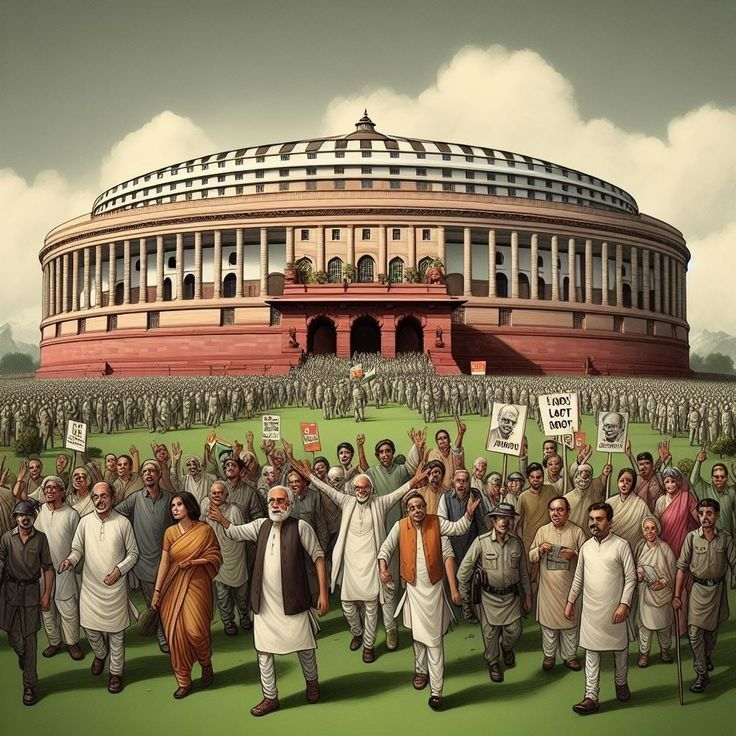Understanding the Concept
One of the cornerstones of the Indian Constitution is the federal structure, which seeks to balance power between the Union and the States. To operationalize this federal design, the Constitution lays down a detailed scheme of distribution of legislative powers. Articles 245 to 255 of the Constitution govern the extent, limitations, and framework of legislative powers in India. The scheme ensures that both the Union and the State legislatures have exclusive as well as concurrent areas of law-making, which helps avoid conflict while maintaining unity.
The fundamental idea behind this distribution is to ensure that the Union Government can legislate on matters of national importance, while the State Governments retain the authority to make laws concerning regional or local issues. By separating subjects into distinct lists, the Constitution safeguards federal harmony and promotes efficient governance.
Constitutional Framework for Legislative Distribution
The Constitution of India, under Article 245, specifies the extent of legislative powers of the Union and State Legislatures. Parliament may legislate for the whole or any part of India, while State Legislatures may make laws only for their respective states.
The Seventh Schedule of the Constitution is central to the distribution of legislative powers. It contains three lists:
- Union List (List I): It includes subjects of national importance like defense, foreign affairs, atomic energy, railways, and banking. Parliament has exclusive powers to legislate on these subjects. States cannot make laws on these matters.
- State List (List II): It covers subjects of regional interest such as police, public health, agriculture, and local government. State Legislatures have exclusive authority to legislate on these matters, with Parliament having limited intervention.
- Concurrent List (List III): This list contains subjects like education, marriage, bankruptcy, and economic and social planning, where both the Union and State Legislatures can legislate. In case of conflict, Union law prevails, as per Article 254.
Additionally, residuary powers under Article 248 empower Parliament to legislate on subjects not enumerated in any list, giving the Union a dynamic role in evolving areas like cyber law, space technology, and artificial intelligence.
Mechanism for Resolving Conflicts
Although the Constitution aims to clearly demarcate powers, disputes between the Union and States are inevitable. Articles 254 to 255 provide mechanisms to resolve conflicts:
- Article 254(1): If a State law conflicts with a Union law on a concurrent subject, the Union law prevails.
- Article 254(2): However, if the State law has received the President’s assent, it may prevail in that state until Parliament repeals or modifies it.
- Article 254(3): Parliament can legislate for the whole or any part of India, overriding State law even on concurrent subjects.
The Supreme Court plays a critical role in adjudicating disputes under Article 131 and through judicial review under Article 32 and Article 136, ensuring that the balance of legislative powers is maintained.
Special Provisions in Exceptional Circumstances
The Constitution also provides mechanisms for legislative intervention in exceptional situations:
- State Emergency: During a national emergency under Article 352, Parliament can legislate on subjects in the State List.
- Financial Emergency (Article 360): Parliament gains the power to direct States on financial matters, impacting legislative priorities.
- President’s Rule (Article 356): When a State government fails to function in accordance with the Constitution, Parliament assumes legislative powers for that State.
These provisions ensure national integrity and prevent legislative paralysis, especially in a country as diverse as India.
Practical Implications of Legislative Distribution
The distribution of legislative powers has several practical implications:
- Federal Harmony: By clearly demarcating Union and State powers, the Constitution prevents conflicts over jurisdiction.
- Flexibility and Adaptation: The inclusion of residuary powers and concurrent lists allows India’s federal system to adapt to modern needs without compromising State autonomy.
- Judicial Oversight: Courts ensure that neither level of government exceeds its constitutional limits, thus safeguarding democracy.
- Governance Efficiency: Local matters like agriculture and health remain under State control, while national matters like defense and foreign affairs are managed centrally.
Despite these advantages, challenges remain. Overlapping areas in the concurrent list and central dominance in residuary powers sometimes lead to federal tension, which the Supreme Court frequently addresses. Cases like State of West Bengal v. Union of India (1962) and Rajasthan v. Union of India (1977) highlight judicial intervention in maintaining balance.
Judicial Interpretation
Indian judiciary has played a crucial role in interpreting the distribution of legislative powers:
- In State of Bombay v. F.N. Balsara (1951), the Court upheld State powers to legislate on subjects of local importance, reinforcing federal autonomy.
- In Union of India v. H.S. Chowdhry (1970), the Supreme Court clarified that residuary powers are exclusively Parliament’s, ensuring the Union can address emerging challenges without State interference.
- In S.R. Bommai v. Union of India (1994), the Court emphasized that parliamentary intervention under emergency provisions is temporary and exceptional, preserving the federal character.
These cases underscore that while the Constitution aims for cooperative federalism, the judiciary acts as a guardian of the balance of powers.
Mnemonic to Remember the Scheme of Distribution of Legislative Powers
Use the mnemonic: “U-S-C-R-J”
U – Union List: National subjects like defense, railways, and foreign affairs
S – State List: Regional subjects like police, health, and agriculture
C – Concurrent List: Shared subjects like education, marriage, and bankruptcy
R – Residuary Powers: Parliament legislates on new/unlisted subjects
J – Judicial Oversight: Supreme Court ensures balance and resolves conflicts
About lawgnan
Gain a complete understanding of the Distribution of Legislative Powers in India under Articles 245 to 255 of the Constitution. Learn how Union, State, and Concurrent Lists in the Seventh Schedule define India’s federal structure while maintaining unity and efficiency. Explore key cases like State of West Bengal v. Union of India and S.R. Bommai v. Union of India that shaped this balance. Ideal for law students, UPSC aspirants, and legal researchers. Visit Lawgnan.in today for in-depth constitutional law guides and expert explanations crafted for academic and professional clarity.




